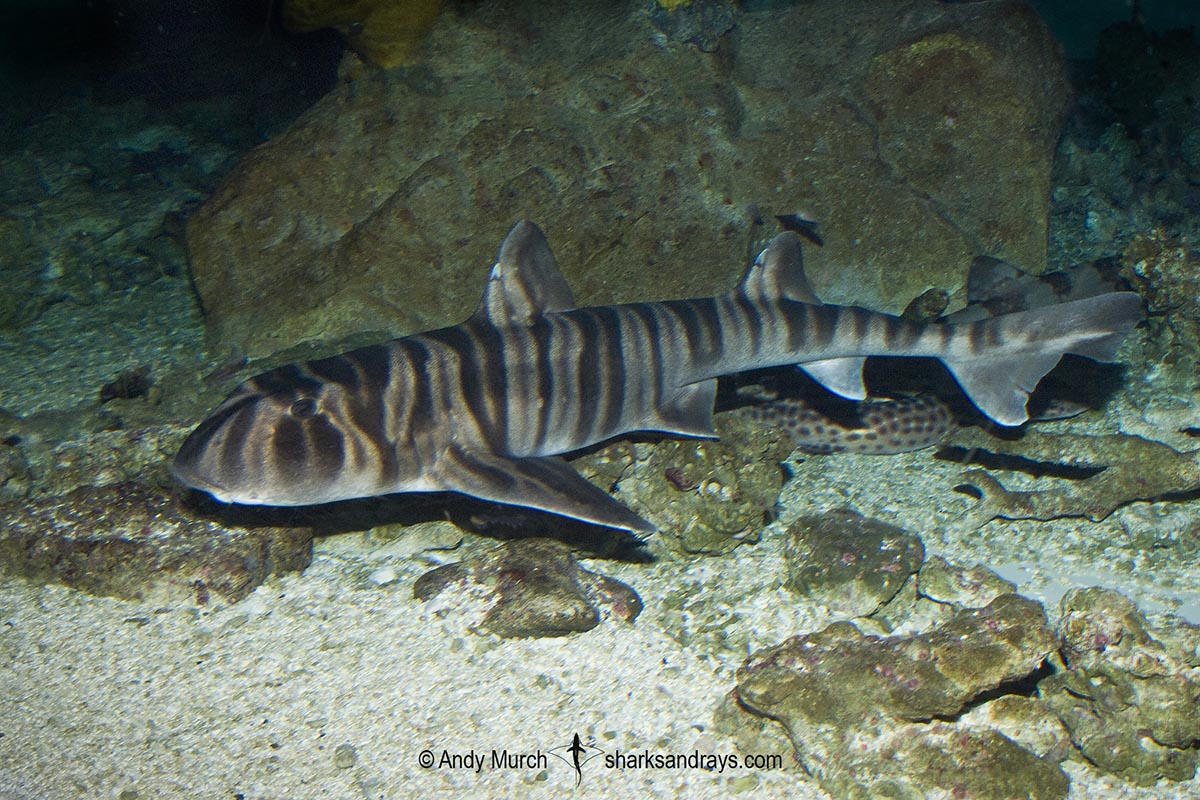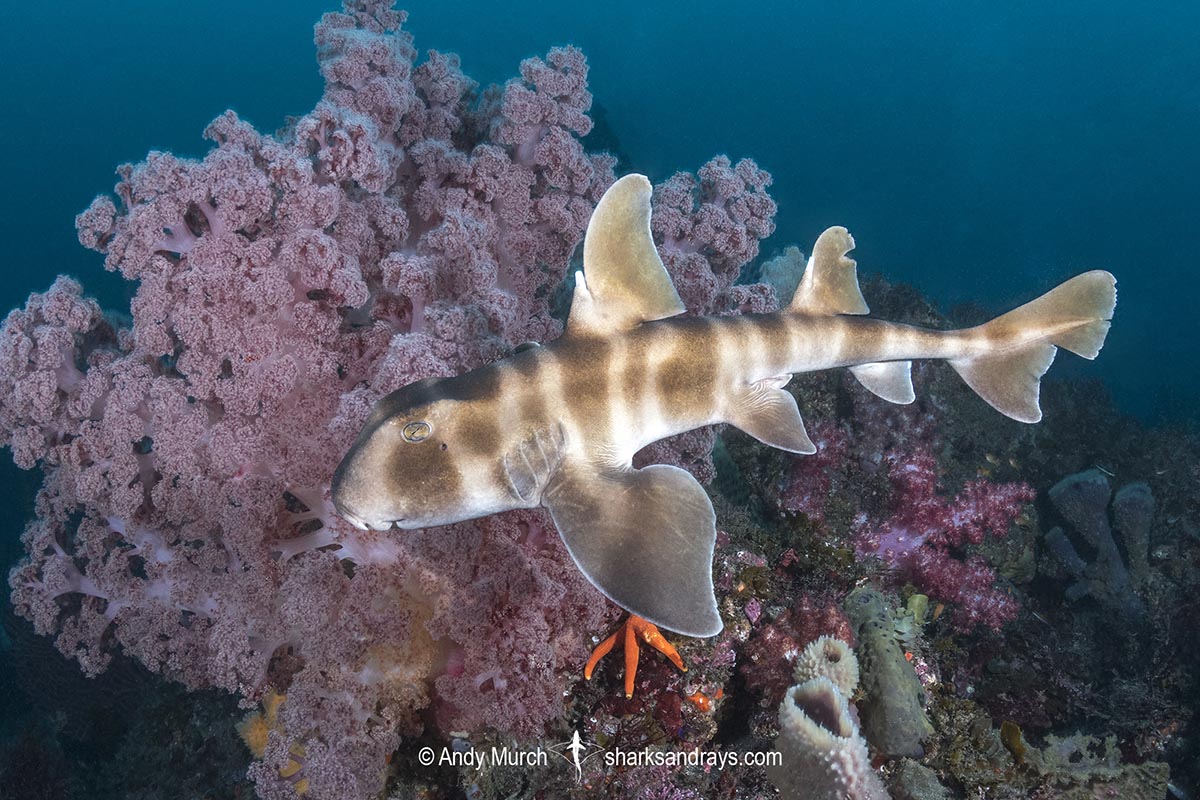Common names
Zebra Bullhead Shark, Zebra Horn Shark, Barred Bullhead Shark.
Binomial
Heterodontus zebra.
Synonyms
Centracion philippi, Centracion zebra, Cestracion amboinensis, Cestracion philippi, Cestracion zebra, Heterodontus phillipi.
Identification
Stout body. Large square head with prominent ridges above eyes. Two tall dorsal fins, each with a prominent spine at its origin. First dorsal fin origin approximately level with pectoral fin insertion. Second dorsal fin origin posterior to pelvic fin free rear tip. Pectoral fins much larger than first dorsal. Large, triangular caudal fin with deep subterminal notch. Vivid zebra-like black, brown, and white markings.
Size
Maximum length 122cm. Size at birth approx. 15cm.

Conservation Status
LEAST CONCERN
The zebra bullhead shark is caught as bycatch by commercial trawlers and possibly other fisheries within its range, but its preference for rocky terrain afford it some protection.
Habitat
Tropical/sub-tropical seas. From shallow inshore environments to outer continental shelf. To 50m in the norther part of its range. To 150-200m in Australia.
Distribution
East Asia. Recorded from Japan, Korea, China, Vietnam, Indonesia, and the northwest coast of Australia.
Reproduction
Oviparous. Reproductive information poorly known.
Diet
Feeds on demersal invertebrates and small fishes.
Behavior
Unknown.
Reaction to divers
Probably easy to approach, but rarely encountered by divers.
Diving logistics
I am not aware of any spots where Zebra bullhead sharks are encountered by divers. If you have encountered this species while diving, please contact us.
What’s new
View our full list of updates
Similar species
Painted Bullhead Shark (Heterodontus marshallae) Extremely similar, but distinguished by rounded (rather than V-shaped) marking above the snout.
Japanese Bullhead Shark Distinguished by similar but much more subtle markings.

